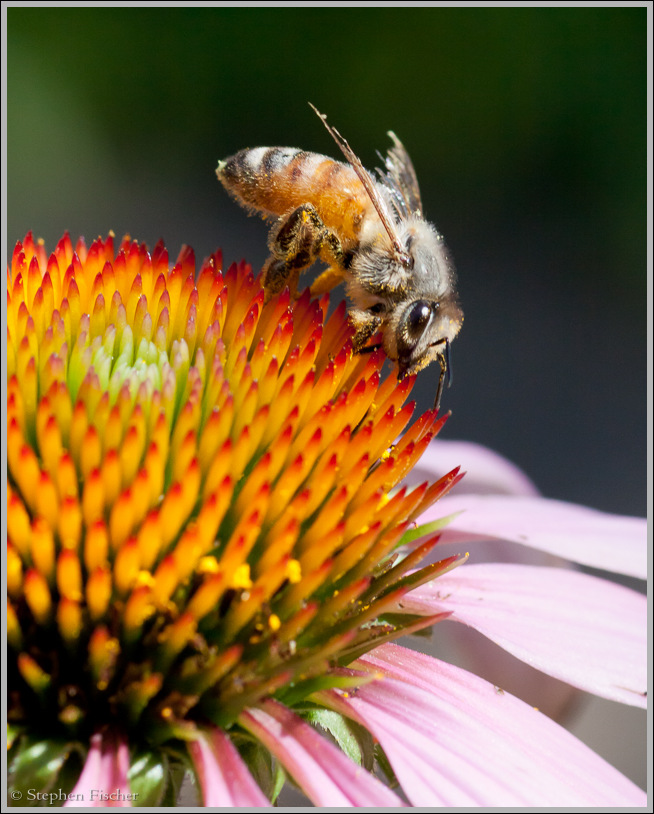Picture of the week
| Previous weeks |
|
|
|
|
|
|
|
|
 June
9, 2013 June
9, 2013 |
 June
2, 2013 June
2, 2013 |
 May
26, 2013 May
26, 2013 |
|
|
 May
5, 2013 May
5, 2013 |
|
|
|
|
|
|
| Older |

Covered in pollen
A honeybee pollinating an echinacea flower head. If you look closely at this particular bee you will note the amount of pollen grains covering its body. As this bee moves from plant to plant, potentially gathering nectar to take back to its hive for honey production, it also spreads these pollen grains from one flower to another. This helps the plant reproduce by spreading the pollen to another flower head of the opposite sex. You may also notice that this bee's wings are heavily tattered. This is a sign that this bee is on the older side and reaching the end of its useful life. During the summer, honey bees only live about 6 weeks, partially due to how hard they work during this peak foraging time. To give you an idea of how hard these bees work: It takes about 2 million flower visits by a honey bee colony to produce 1 pound of honey. Talk about crowd sourcing!
If you would like to learn more about honeybees and their plight, a panel of experts and practitioners of bees will discuss these issues at midtown Sacramento this Wednesday 8/1/2013, starting at 6 pm at the Urban Hive at 1931 H street. I will also be attending to help with this event with Mojgan, one of the panel participants. It is open to the public with a modest fee, as they will also be serving food and drink. More information can be found here at the Sacramento Press article.
All content and images are property of Stephen Fischer Photography, copyright 2013. Last updated: 7/28/2013 ()